Cinema, or, the Regard for Uncertainty

Perhaps the most famous, if not the most productive, aphorism of cinema is itself uttered in a film. In Jean-Luc Godard’s Le Petit Soldat we are told that “cinema is truth twenty-four times per second”. There is something at once powerful and incredible about such a statement. Today, when we are often bombarded by the elaborate spectacles and visual excess of Hollywood blockbusters, it seems rather silly to hold on to the notion that cinema equals truth since much of what is depicted on the screen can hardly be said to be an experience of the everyday. Moreover, the ability to create such special effects owes its existence to the newer digital technologies which have at once “enhanced” cinema as such, but also put its very identity into radical doubt.
As Lev Manovich reminds us, computer media has destabilized the long held belief in cinema’s identity as “the art of the index” because
it is now possible to generate photorealistic scenes entirely on a computer using 3-D computer animation; modify individual frames or whole scenes with the help of a digital paint program; cut, bend, stretch, and stitch digitzed film images into something with perfect photographic credibility, even thought it was never actually filmed … (295)
Since the 1990s, cinema has been radically redefined, and it is “radical” in the sense that it marks a return to its “roots” as animation: “Live-action footage is now only raw material to be manipulated by hand — animated, combined with 3-D computer generated scenes, and painted over … Born from animation, cinema pushed animation to its periphery, only in the end to become a particular case of animation” (Manovich 302, emphasis in original). Much like the proclamation of a certain “death of photography” with the arrival of digital imaging, the spontaneous belief in the veracity of the image is now suspended. What we are left with, as Manovich suggests, in this digital age is the irrefutable notion that cinema has always been animation by human hands rather than “nature’s automatic writing” as was assumed of the photographic arts (Marien 23).
This of course is an intriguing proposition from Manovich, and one that unsettles much of film theories and criticisms accumulated over the years. Was it not Andre Bazin who, infected by a desire to elevate film as an artistic medium, famously emphasized the objectivity of the photographic image in opposition to the plastic arts? As he frames it: “For the first time an image of the world is formed automatically, without the creative intervention of man” (Bazin, “Ontology” 168). The automatism of the camera has meant that one could reproduce reality largely freed from creative analysis and manipulation. However, Manovich’s argument would seem to place Bazin’s “ontology” of the image in radical doubt. For it is as if the painterly element which has always haunted cinema has now, in the digital age, return to the fore, rendering the image on the screen somewhat uncanny. Yet, while all these seem to make for a fascinating history of cinematic discourse, I would argue that cinema enjoys, as Bazin insisted, a privileged connection with the real, but it is not the real as Manovich understands it. In so doing, I would come back eventually, by way of Jacques Derrida and Gilles Deleuze’s thoughts on cinema, to the quotation which began this long digression — that is, “cinema is truth twenty-four times per second”.
“What are you looking at?”: Reality as Cinema
Manovich’s thoughts on digital cinema would, at the very least, seem to imply a certain death on the part of cinema in the sense that cinema as we knew it (an “art of the index”) needs to be critically revised. Yet, this argument rests on the assumption that it is cinema that has changed, whereas reality remains nonetheless the stable entity against which the identity of cinema is measured or defined. In the case of reality, it was business as usual. But while he is certainly right in pointing out that cinema’s identity has experienced a kind of reterritorialization (from an index to an icon of reality), Manovich does not entertain the question whether it is reality whose grounds have been unsettled in the process as well. There is, then, a sliver of the metaphysical in Manovich’s argument which needs some unpacking here: one which would also require a relook at Bazin’s thoughts on the relationship between cinema and reality.
When reading Manovich against Bazin, it is almost impossible to avoid the impression that Bazin had somehow been misguided in the intimations he charts between cinema and reality. Indeed, writing before Bazin’s time, another film critic Rudolf Arnheim had already made the call to differentiate between cinema and reality and to maintain that distinction. For Arnheim, the camera is hardly “an automatic recording machine” since the singular perspective of the camera already requires an exercise in creative discretion: to select one point of view amongst many others which would optimize the information contained in the final image (283). It is on this basis that Arnheim would go on to make the case for film as art. On the first reading at least, it would appear that Arnheim and Bazin make strange bedfellows in the world of film theory since Bazin makes the strong claim of cinema’s privileged connection with the real.
However, consider what Arnheim goes on to champion film for: “It is one of the most important formal qualities of film that every object that is reproduced appears simultaneously in two entirely different frames of reference, namely, the two-dimensional and the three-dimensional, and that as one identical object it fulfills two different functions in the two contexts” (288, emphasis mine). Put simply, Arnheim was all for the “reduction of depth” in cinema that made the latter “neither absolutely two-dimensional nor absolutely three-dimensional, but something between” (284, emphasis mine). Whereas reality in its actuality is said to be solid, unchanging, and perhaps undeniably three-dimensional, the image on the screen was, for Arnheim, ghostly, equivocal and undecidable. And it is precisely these qualities that would motivate Arnheim’s hesitance towards the so-called “talkies” made possible by the then-new developments in sound technology. As he observed, there was (and perhaps still is) a tendency to view “the introduction of sound as an improvement or completion of silent film” (Arnheim 289, emphasis mine). Here, Arnheim’s anxiety towards the “talkies” stems from his rejection of a teleological account being sold of cinema’s historical evolution: for it was not as if silent film prior to the introduction of sound was truly silent since there was, typically, non-diegetic music that would accompany the image. More importantly, Arnheim is aware of and in fact acknowledges the privilege that the spoken word enjoys over the written or the graphic sign, confessing a fear that the ambiguous image would be glossed over by the fuller presence of the voice (290). Therefore, Arnheim’s hesitance towards the introduction of sound, or more precisely of recorded dialogue, is not merely a historiographical concern; it is also marked by an anxiety against the potential saturation of the image’s presence. In short, Arnheim argues for a filmic medium haunted by an equivocality, rejecting both the notion and prospect of a cinema which simply mimics the actuality or pure presence of reality.
Contrary to first impressions then, there is a strong connection between Arnheim and Bazin. That is, despite their disagreements over the relationship between cinema and reality, both Arnheim and Bazin essentially look to cinema as a privileged site which could provide for its spectators an encounter with uncertainty. What is different is the way in which each understood what reality meant. Bazin’s essay “The Evolution of the Language of Cinema” is perhaps most famous for its defense of Realist cinema and what he saw as the latter’s respect for an immanent reality reproduced by the camera. It is certainly easy to attack Bazin for mistaking the camera as a passive or neutral medium for the reproduction of reality. But I would argue that in doing so, one loses sight of the prize Bazin was really after: cinema’s ability to present a reality that is always already ambiguous and undecidable. If Bazin had made the call for filmmakers to privilege deep focus and long takes over shallow depth and rapid montages, it is motivated by his observation that the former pair “reintroduced ambiguity into the structure of the image” (Bazin, “Evolution” 136). “What is at stake in the subjective distortion of the filmic image through design, editing techniques, or camera settings is this connection of the spectator with the everyday unpredictability of living” (Hadjioannou 19). Indeed, Deleuze would confirm this by arguing that the reality Bazin wrote about in his criticisms of cinema is always already “dispersive, elliptical, errant or wavering, working in blocs, with deliberately weak connections and floating events” (1). To that end, I would think that Bazin is not so much looking to assert, naively, that the cinema is merely a passive or neutral tool for the reproduction of reality. Rather, he is strategically drawing on this faith placed on the image’s indexicality to the real to claim that cinema is not a re-presentation of reality if it is to be understood as a copy; cinema is a presentation of a reality that is already haunted by ambiguity and uncertainty, irreducible to any closed system of thought.
It is a subtle difference, perhaps, but one that has tremendous implications that would unsettle both the accounts of Arnheim and Manovich. For it clearly departs from the truism of a transcendental reality at work in Arnheim and Manovich’s accounts. Rather than maintaining a binary opposition between cinema and reality, Bazin’s criticism of cinema marks an attempt to suspend the boundaries drawn up between the two and to point us towards an understanding of reality as always already cinema. If the real “ is what we mean by the ways things, objects, and individuals appear” (Phillips 165, emphasis in original), and cinema had become one of the most popular form of media by the time Bazin was writing in the middle of the twentieth century, then surely one needs to ask the questions if and indeed how cinema has radically altered the nature of reality. And even in the attempt to address that question alone, one is already experiencing a de-sedimentation of reality into the cinematic.
All the World’s An Animated Specter
In an interview regarding his “performance” in Ken McMullen’s film Ghost Dance, Derrida observes:
[C]ontrary to what we might believe, the experience of ghosts is not tied to a bygone historical period, … but on the contrary, is accentuated, accelerated by modern technologies like film, television, the telephone. These technologies inhabit, as it were, a phantom structure. Cinema is the art of phantoms … When the very first perception of an image is linked to a structure of reproduction, then we are dealing with the realm of phantoms. (“Ghost Dance Interview” 61, emphasis in original)
For Derrida, modern technologies which have enabled us to reproduce our world has led to an increasing sense of haunting since it suggests that reality, or the way in which our world appears to us, is never fully present in itself. This is closely tied to what Derrida has elsewhere noted as the “iterability” of all things. Paraphrasing Derrida here, for a sign to remain a functional and meaningful sign it has to be repeatable rather than a “one-off”. But at the same time, to be repeatable, it cannot afford to have its meaning saturated or fulfilled at any iteration. Therefore there is always something of a non-present remainder that necessarily haunts every sign. Not only does this undecidability ensures that there is a certain consistency in the sign’s meaning across the board but also opens it up to a future of potential otherness. Repetition, in short, always entails a difference to come; and things are never, nor can they afford to be, fully present in themselves at any instance. The greater implication is that in order for the world to maintain a certain and somewhat stable economy of meanings, it is necessarily given over to a radical uncertainty that at once ensures its possibility (and impossibility). In Derrida’s argument, cinema’s ability to reproduce the real over and over simply makes this all the more apparent: reality is not reducible to a given instant but necessarily haunted by a non-present remainder, by a future of potential otherness that is always yet to come. Already, one is approaching what is possibly meant by the aphorism “cinema is truth twenty-four times a second”. At this point, a brief excursion into Deleuze’s thoughts on cinema is in order.
For Deleuze, cinema is not merely a specific mode of storytelling or communication. Instead, “the very mode of cinematic form altered the possibilities for thinking and imagining” (Colebrook 29). While Deleuze privileges cinema as a medium through which one may come to think about time, Deleuze understands time not in our usual spatialized understanding of it but as “the power of life to move and become” (Colebrook 40). To venture a summary of Deleuze’s thoughts on cinema, it might be said that cinema makes apparent the very dynamism of life or reality itself as constant movement and process of becoming, not dissimilar to Derrida’s argument above. And this is hardly surprising given Deleuze’s preoccupation with terms such as rhizomes, deterritorialization and reterritorialization. But more importantly, like Bazin and Derrida, Deleuze does not maintain a strict binary opposition between cinema and reality. Quite simply for Deleuze, reality is always already cinematic in its constant flickering state of becoming.
More than that, there is something else in Deleuze’s work on cinema that is especially enlightening in terms of the supposed crisis of cinema with the advent of digital imaging: what Deleuze calls the “time-image”. The time-image is constituted by “opsigns” and “sonsigns”: visual and sonic signifiers that are not reducible to any fixed or given meaning, often appearing as irrational cuts which creates a strong sense of disequilibrium. This unsettling effect gestures the spectator towards a recognition of that “something intolerable and unbearable” which haunts not only the film s/he is watching but of reality in general (Deleuze 18). As Deleuze argues, these equivocal or undecidable signs have “always haunted the cinema” even though it is the modern cinema of the postwar years that gave it prominence (41). But this uncertainty is not so much negative in the sense that it destroys established structures of thought as it is positive for Deleuze since it puts the wheels of reality in motion and paves the way for new modes of thinking. In reality as in cinema, the world is haunted, possessed, never settled with itself but constantly on the move — at twenty-four iterations per second or otherwise.
The uncertainty surrounding the “ontological” status of the image in the age of digital imaging — i.e. whether it is an analogical index we are seeing or a digital icon made to resemble its predecessor — have only added to this ghostly experience of cinema. This is not to say that every frame of every film today is necessarily a time-image, but rather that perhaps now more than ever, cinema is increasingly the site for an encounter with the undecidable or the unthought of reality. By way of concluding, I will examine Takashi Miike’s Visitor Q (2001) and Michael Haneke’s Cache (2005) in what follows. These two films are chosen not simply because they are highly ambiguous or employ time-images rather frequently, but also because in many ways they function as contemporary commentaries on cinema itself on top of their obvious social critiques.
Of Haunting Strangers: Visitor Q and Cache
The first thing that one notices when watching Visitor Q is the “lo-fi” quality to its images, compared to the glossy images that constitute many films. With the ubiquity of digital images today, it would be easy for many to recognize that the film is shot on digital video (something hinted at in the film itself with the constant appearance of the father’s video-camera). Arguably, this lends itself a sense of “immediacy” to the images despites its “technical imperfections”, perhaps mimicking the effect that Direct Cinema in the early 1960s once had. This filiation to Direct Cinema is not without its significance since Visitor Q is similarly embracing the new technologies that would allow for films to be made more quickly and more cheaply. Particularly important too is its historical context. As one film scholar observed, just a few years before Visitor Q was released in 2001, Hollywood cinema was busy churning out films that evoked “digital paranoia” in the form of virtual simulations taking over the otherwise authentic “‘analog’ world of everyday life” as evident in films like Dark City and The Matrix (Rodowick 1397). Rather than being bullied into thinking that digital was “fake” or “inauthentic” in opposition to the analog image, Visitor Q embraced the new means of filmmaking and did so with a terrifying brilliance.
The film clearly has its self-reflexive moments. In the sequence just before the title of the film is presented, one sees the father sitting down in a railway station, static like a spectator. As is well known, the relationship between cinema and trains is a significant one: Lynne Kirby famously wrote that the two shared an uncanny similarity in the paradoxical experience of “simultaneous movement and stillness” (2). The camera then pans across the station and there the window frames allude to the cinematic movements of framed images. In a sudden moment, the strange visitor who has been standing behind turns to whack the father on the head with a rock before we are shown the film title. This sudden, absurd moment marks precisely the experience of cinema that the likes of Arnheim, Bazin, Derrida and Deleuze all speak of in their own ways: the uncertainty or unpredictability of the world that cinema presents us.
Timothy Iles would go on to read the film as an “absolutely absurdist assault on the notions of middle-class domesticity”; the aim of the film is to strike the spectator on the head, to awaken him to the reality of absurdity in the structure of the nuclear family (94). While I agree with Iles’s reading of the film’s social critique, I do think that this sequence also warrants a reading in terms of its commentary on the conditions of cinema in the so-called digital age.
Against the digital paranoia evoked by Hollywood cinema, Visitor Q suggests that the cinematic experience had always been one of haunting disequilibrium — digital or otherwise: Cinema’s value lies not so much in its ability to represent reality as it truly is, but in its ability to present the radical uncertainty of reality. One does not ever find out who this strange visitor really is, whether he represents the film itself or is a godly avatar. But what is certain and more important are the effects he brings about for the family: its change and reconfiguration. Towards the end of the film when the son thanks the strange visitor for destroying the family, it is not to be taken in its negative sense but rather a positive one understood in terms of a dynamism and becoming. That the son, who represents the future, is missing from the last sequence also disrupts the easy assumption that Visitor Q settles for a family finally restored. Family, as a transcendental signified around which many of us navigate our lives, is shown to be cinematic: equivocal (as signaled by the replacement of a father-householder’s phallus for a pair of breasts with excess milk), constantly changing or flickering as it were.
Similarly in Cache, the culprit responsible for sending the mysterious tapes remains at the end of the film unidentified. (It also remains to be seen if Georges’s family is still haunted by these mysterious recordings of their lives and home.) Here, one could speculate on the identity of the sender: Majid’s son, a stalker of Georges, perhaps God? But the thrill of watching Cache lies in the uncertainty it evokes in the spectator: the joyride itself rather than the end result. Of course, one could read Cache as an allegory of France’s post-colonial guilt imploding within the walls of a typical middle-class white family. But I would like to focus on how Cache functions too as a critical commentary on cinema in the digital age. As Ricardo Domizio argues, Cache, as Haneke’s first digital production, stages the “cultural apprehension” surrounding not only the “ubiquity of images” but also their “newfound instability” (238, 243). This is evident in the way the film constantly toys with the spectator by blurring the boundaries between the first order of the diegesis (Georges’s actual world) and its second order (that of the recorded footages). At the most elementary level, this is an allusion to the seamless mediascape offered by digitization where media loses their specificity, becoming merely numbers and pixels under the indiscriminate gaze of the digital eye. These undecidable moments would therefore function like the irrational cuts of Deleuze’s time-image, where their meanings or their “ontological” statuses constantly remain suspended.
Consider the opening sequence in which one is presented with what looks to be a still image held far too long for a typical establishing shot. Indeed, it is only after a passer-by walks into and out of the frame after two minutes of stillness that one realizes that this is a moving image. From the beginning then, Cache is already haunted by an undecidability that sustains the spectator’s look. And even then, the spectator is once more shown to be fooled as the image reveals itself to be merely a taped recording received by Georges and his family. Right before this revelation, one hears Georges’s and Anna’s booming voices as if from behind, already hinting that there is something yet to be determined as one tries to put faces to these two voices.
Arnheim’s anxiety about dialogue and recorded voices saturating the image’s ambiguity is especially pertinent here: this seems to put the spectator at ease and glosses over the destabilizing moments seen earlier — at least for the moment. For as the film develops, the presence assumed of these two voices, Georges and Anna, are shown to each have their own secrets (i.e. Georges’s childhood, Anna’s infidelity), thus evoking the sense in which no one is ever fully present to others nor indeed themselves. Not surprisingly, the last sequence in Cache which features both Majid’s son and Georges’s son, again representatives of the future to come, remains ambiguous at best. One is left unsure as to what was the subject of the conversation between the two and who was it really that had sent those mysterious tapes. In that sense, I would argue that Cache amplifies the uncertainty of cinema in the digital age not only with the astute blurring of the boundaries between the different layers of its filmic diegesis, but also in the sense in which it gestures us towards a recognition, if not the embracing, of the radical uncertainty in our (cinematic) becoming and the future that is always yet to come.
That is, rather than remaining stuck on the debates between “digital delusion” and “analog authenticity”, Visitor Q and Cache have taken up to the new technologies not only for the economy it brings to filmmaking, but also to explore the ways in which they allow for an expression of a cinema that was perhaps always about the undecidability and equivocality of reality. To put it in a different frame, reality is always already cinematic.
Works Cited
References
Arnheim, Rudolf. “Film and Reality”. Film Theory and Criticism: Introductory Readings. 7th ed. Ed. Leo Braudy and Marshall Cohen. New York: Oxford University Press, 2009. Print. 282-291.
Bazin, Andre. “The Evolution of the Language of Cinema”. Film Theory and Criticism: Introductory Readings. 3rd ed. Ed. Leo Braudy and Marshall Cohen. New York: Oxford University Press, 1985. Print. 124-138.
—. “The Ontology of the Photographic Image”. Film Theory and Criticism: Introductory Readings. 6th ed. Ed. Leo Braudy and Marshall Cohen. New York: Oxford University Press, 2004. Print. 166-9.
Colebrook, Claire. Gilles Deleuze. London: Routledge, 2002. Print.
Deleuze, Gilles. Cinema 2: The Time-Image. Trans. Hugh Tomlinson and Robert Galeta. Minneapolis, MN: University of Minnesota Press, 1989. Print.
Derrida, Jacques. A Derrida Reader: Between the Blinds. Ed. Peggy Kamuf. New York: Columbia University Press, 1991. Print.
—. “Ghost Dance Interview”. Public 2 (1989): 60-67. Print.
Domizio, Ricardo. “Digital Cinema and the ‘Schizophrenic’ Image: The Case of Michael Haneke’s Hidden”. The Cinema of Michael Haneke. Ed. Ben McCann and David Sorfa. London: Wallflower Press, 2011. Print. 237-246.
Hadjioannou, Markos. From Light to Byte: Toward an Ethics of Digital Cinema. Minneapolis, MN: University of Minnesota Press, 2012. Print.
Iles, Timothy. The Crisis of Identity in Contemporary Japanese Film: Personal, Cultural, National. Boston, MA: Brill, 2008. Print.
Kirby, Lynne. Parallel Tracks: The Railroad and Silent Cinema. Exeter: University of Exeter Press, 1997. Print.
Manovich, Lev. The Language of New Media. Cambridge, MA: The MIT Press, 2001. Print.
Marien, Mary Warner. Photography: A Cultural History. London: Laurence King, 2002. Print.
Phillips, John. “Humanity’s End”. Baudrillard Now: Current Perspectives in Baudrillard Studies. Ed. Ryan Bishop. Malden, MA: Polity, 2009. Print. 159-171.
Rodowick, D. N. “Dr. Strange Media; Or, How I Learned to Stop Worrying and Love Film Theory”. PMLA 116.5 (2001): 1396-1404. Print.
Films
Cache. Dir. Michael Haneke. Artificial Eye, 2005. Film.
Dark City. Dir. Alex Proyas. New Line Cinema, 1998. Film.
Ghost Dance. Dir. Ken McMullen. Channel Four Films, 1983. Film.
Le Petit Soldat. Dir. Jean-Luc Godard. Société Nouvelle de Cinématographie, 1963. Film.
The Matrix. Dir. Andy Wachowski and Larry Wachowski. Warner Bros. Pictures, 1999. Film.
Visitor Q. Dir. Takashi Miike. CineRocket, 2001. Film.

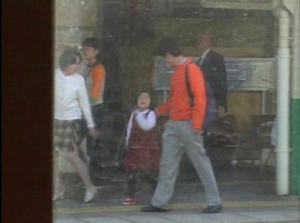
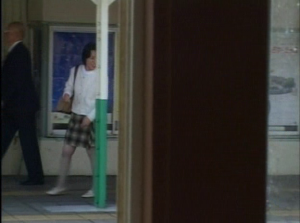
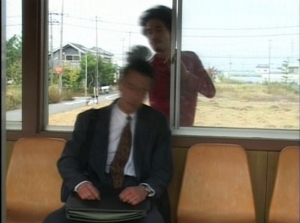
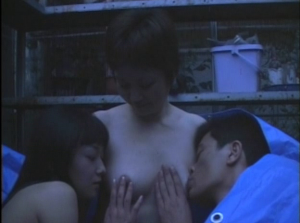
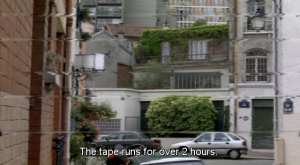
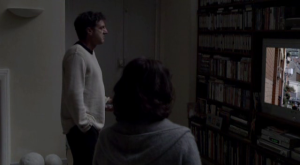
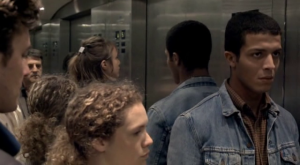
Leave a comment